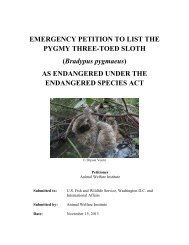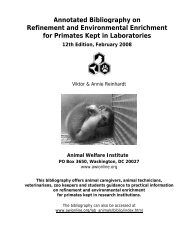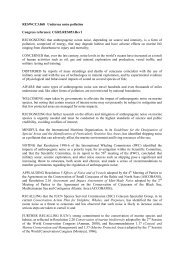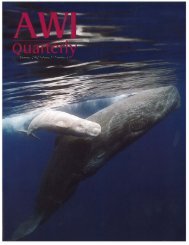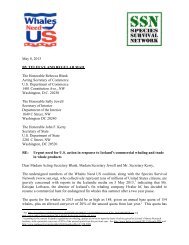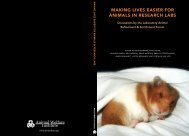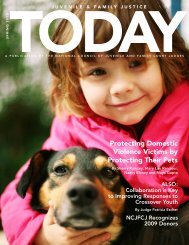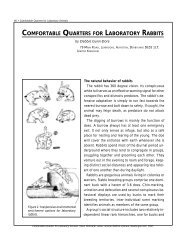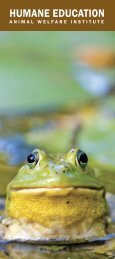A Common Bond - The National Link Coalition
A Common Bond - The National Link Coalition
A Common Bond - The National Link Coalition
- No tags were found...
You also want an ePaper? Increase the reach of your titles
YUMPU automatically turns print PDFs into web optimized ePapers that Google loves.
Chapter 3:Employ Animal-Focused Interventions for Child Victims, Children Who Abuse, and At-Risk ChildrenGuideline 5Use or adapt available instruments and subscales toidentify animal maltreatment in and outside of thehome when conducting child protection investigationsand assessments.Duncan and Miller (2002) noted that there are few assessment measures forchildhood cruelty to animals. Existing instruments that focus exclusively onanimal-related experiences include the following:• AniCare Child: An Assessment and Treatment Approach for ChildhoodAnimal Abuse (Randour, Krinsk, & Wolf, 2001)• Boat Inventory on Animal-Related Experiences, developed by BarbaraBoat, Child Trauma Center, University of Cincinnati (Boat, 1999)• Children and Animals Assessment Instrument (CAAI) (Ascione, 1993;Ascione, Thompson, & Black, 1997)• Children’s Attitudes and Behaviors Towards Animals (CABTA) (Guymer,Mellor, Luk, & Pearse, 2001)• P.E.T. Scale for the Measurement of Physical and Emotional TormentingAgainst Animals (Baldry, 2004)• Clinical Assessment of Juvenile Animal Cruelty (Zimmerman &Lewchanin, 2000)AniCare Child: An Assessment and Treatment Approach for ChildhoodAnimal Abuse is a handbook that, although written primarily for assessing andtreating children who have perpetrated or witnessed animal abuse, emphasizesthat all children and families should be asked questions about animal-relatedexperiences. Four basic steps are detailed:1. Ask about a child’s relationship with animals.2. Obtain data from multiple sources.3. If the child perpetrated animal cruelty, conduct a comprehensiveassessment of the extent, nature, context, and motivation for the animalcruelty.4. If the child witnessed animal cruelty, assess the effects.<strong>The</strong> handbook offers guidance on questions to ask when making anassessment, and it identifies factors to consider in the assessment of juvenileanimal cruelty, which help the assessor weigh the seriousness of the abuseand decide what level of intervention to recommend. Finally, it emphasizesthe importance of being sensitive to the possibility that a child has witnessed20



